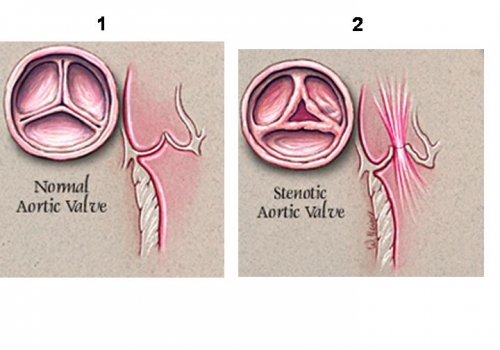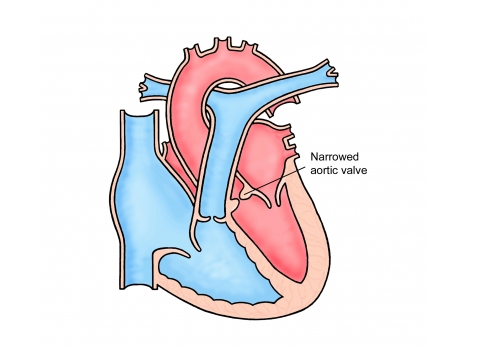Adult
- About
- Meet The Team
- Conditions
- Anticoagulation in Pregnancy
- Aortic Dilatation and Pregnancy
- Aortic Valve Disease
- Aortic Valve Replacement
- Atrial Septal Defect
- Coarctation - Transcatheter stent (keyhole) treatment
- Coarctation of the Aorta
- Congenitally Corrected Transposition of the Great Arteries
- Ebsteins Anomaly
- Eisenmenger’s Syndrome
- Fontan Circulation
- Mitral Valve Repair/Replacement
- Normal Heart
- Patent Foramen Ovale
- Pregnancy information for women with metal heart valves
- Pulmonary Incompetence
- Pulmonary Stenosis
- Pulmonary Valve Replacement - Surgery
- Pulmonary valve replacement - Transcatheter (keyhole) treatment
- Repaired Atrioventricular Septal Defects
- Sub-aortic Stenosis
- Surgical treatment of Atrial Septal Defect
- Tetralogy of Fallot
- Transposition of the Great Arteries - The Atrial Switch (Mustard or Senning) procedure
- Transposition of the Great Arteries – Arterial Switch
- Ventricular Septal Defect
- Ventricular Septal Defect - Transcatheter (keyhole) treatment
- Patient Feedback
- Making the most of your clinic appointment
- Your Appointment in Outpatients
- Easy Read Guide for Out Patients
- Cardiac Catheter
- Transoesophageal Echocardiogram
- MRI
- Surgery & "Top Tips" for coming into hospital
- Lifestyle Advice
- Exercise
- Heart Failure
- End of Life and Palliative Care
- Looking after your oral health
- Dentists Information Section: Dental care in adults at risk of Infective Endocarditis
- Yorkshire Regional Genetic Service
- Support
- Video Diaries
- Second Opinion
- Monitoring Results at Leeds Infirmary
- Professionals
Aortic Valve Replacement
The aortic valve is one of the main valves in the heart. It is there to ensure that red blood (containing oxygen) passes in the right direction from the main pumping chamber (the left ventricle) to the main blood vessel (the aorta) and out to the rest of the body. The valve closes after every heart beat so blood that should be going to the body doesn’t leak back into the pumping chamber (left ventricle). The normal aortic valve is a delicate structure with 3 leaflets.


In aortic valve disease there is an abnormality of the aortic valve which means it does not work properly. The aortic valve can be narrowed in which case it won’t open properly (aortic stenosis) or it may not close properly and leak blood backwards into the main pumping chamber (aortic regurgitation). In some cases the valve may be both narrowed and leaky in which case the problem can be described as “mixed” aortic valve disease
Bicuspid aortic valve
About 2% of people have aortic valves that have 2 leaflets rather than the usual 3. These valves can function very well throughout life but do have a tendency to narrow and/or leak as people get older. As well as an abnormality with the valve people with biscupid aortic valves frequently have an abnormality of the wall of the main blood vessel (aorta) such that it can stretch with the risk of a tear once it gets beyond a certain size. Your cardiologist will monitor this by scanning your valve and the vessel.
Aortic stenosis (narrowing)
In aortic stenosis the leaflets are either thickened or stuck together (picture 2 above).In a severely narrowed valve pressure can build up in the main pumping chamber (left ventricle) which can eventually lead to permanent damage. When this happens the valve must be opened up.
Aortic regurgitation (leak)
Aortic regurgitation also results from abnormalities in the aortic valve leaflets. A leaky aortic valve makes the pumping chamber of the heart work harder than normal. When the leak is severe the valve needs replacing to preserve the pumping chamber.
The Operation
Surgery involves opening the chest through the breast bone and taking over the function of the heart and lungs with a machine (“heart bypass”) to allow the surgeon to stop the heart, and replace the damaged valve. At the end of the operation drains are placed into the chest. Once the operation is completed the heart bypass machine is turned down and your own heart starts beating by itself. Once the surgeon is happy with your progress the heart bypass machine is removed. The final stage of the operation is to close the chest. Your breast bone is held together with about stainless steel wires and the muscle and skin are stitched. Pacing wires are placed on the surface of the heart in case of a low heart rate (bradycardia) in the early post-operative stage. The chest drains are usually removed within 24-36 hours, and the pacing wires after about 4-5 days.
There are 2 types of valve which are commonly used:
Tissue Aortic Valve Replacement — engineered from a pig or cow heart valve. Their main advantage is that you would usually not need to take Warfarin afterwards. For women contemplating having a family, this can be very important due to the side-effects of the medication and effects on an unborn child.
Metal Aortic Valve Replacement — this is a metal valve. You would need to take Warfarin tablets for life afterwards. The main advantage of having a metal valve replacement is that it should last for many, many years, possibly even forever.
Aortic root replacement is the treatment for an enlarged aorta. In aortic root replacement the surgeon removes the enlarged section of the aorta and replaces it with an artificial tube (Dacron graft).The coronary arteries (blood vessels that supply the heart with oxygen rich blood) are attached to the aorta. These are removed during the operation and re-implanted once the new graft is in place. In some cases the aortic root and aortic valve both need replacing at the same time. One technique is where the surgeon sutures the valve inside of the graft. Risk factors associated with this type of procedure will be discussed with you in the surgical clinic.
The procedure is very safe with a risk of dying of around 1 in 100. There is an even smaller risk of brain damage (stroke) related to the use of the heart bypass machine. Other minor problems can occur, such as bleeding, infection, fluid collecting around the heart or temporary electrical instability but these are rarely serious. After surgery a short stay on the intensive care unit (usually 2 days) and then a period in hospital for observation (usually about 7 days) is required before going home. Opening the front of the chest leads to a scar and the chest wall will be sore whilst it heals. The time taken to get fully back to normal varies from person to person but can be up to 3 months.
After the Operation
After your operation you will be closely monitored by both the surgeon and cardiologist. A nurse specialist will visit you on the ward and provide you with a rehabilitation booklet. They will also give you advice about the period after discharge and answer any questions that you may have. The nurse will phone you at home in the week following discharge to check on your progress. You will be given a telephone number that you can contact should you have any concerns in between discharge and follow-up. The team’s physiotherapist can provide exercise plans. These are useful as it is important for your recovery to remain active after the operation.
Final Points
In the 2 weeks leading up to your surgery, you will receive an appointment to attend pre-admission clinic. This is to make sure that you are fit for surgery and also to give you an opportunity to find out more about coming into hospital and ask any questions you may have.
For all people having open heart surgery, dental work should be completed within 6 months before your surgery to reduce the risk of infection in the heart (endocarditis).
Potential issues related to Warfarin should be identified so that the right type of valve can be chosen for you.
You will need to take some medication following the operation but most of it is likely to be temporary (warfarin is for life).
You will need between 6 and 12 weeks off work, depending on your job.
You cannot drive for 6 weeks following the operation.
